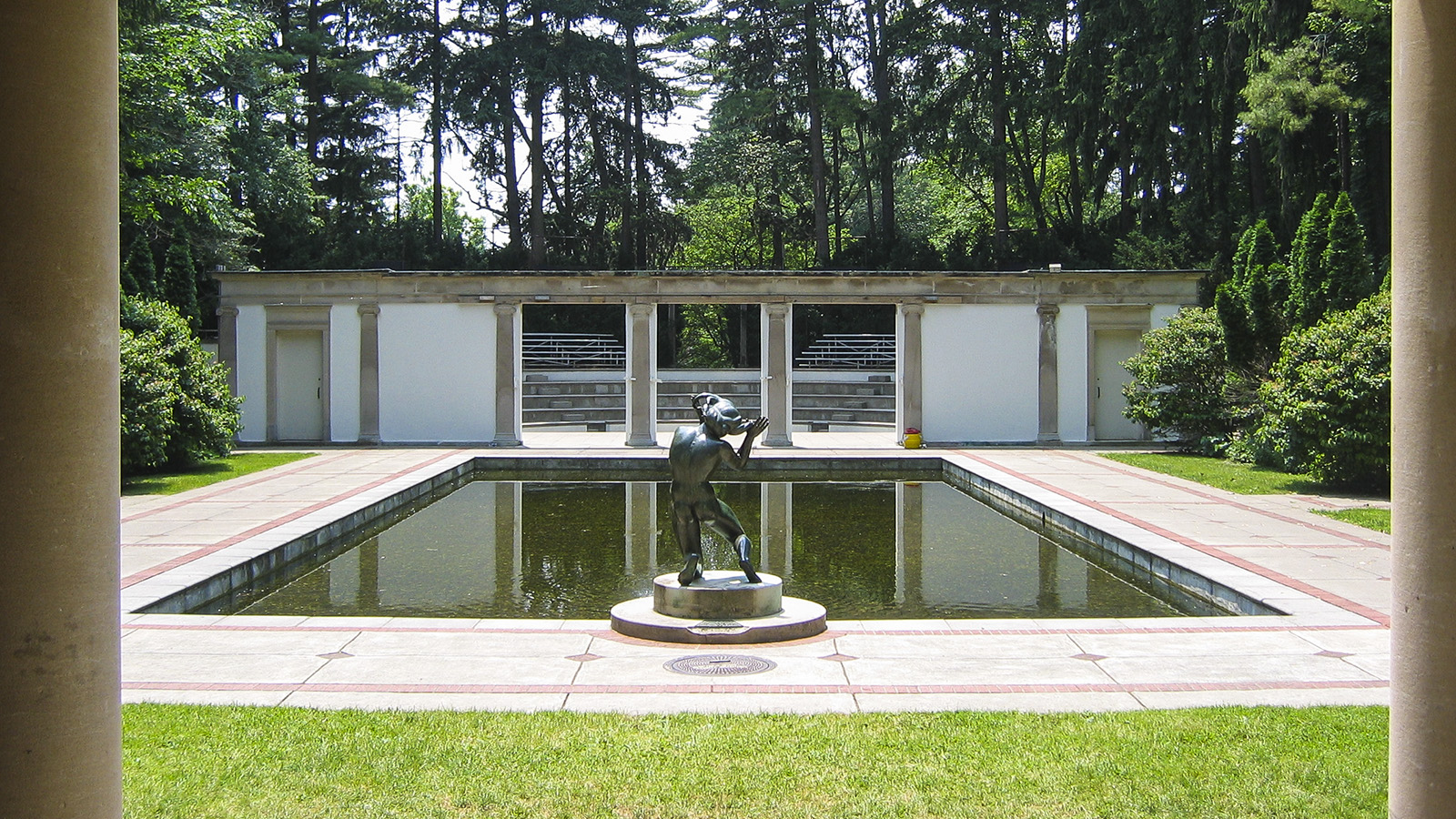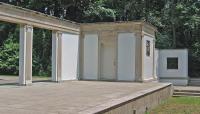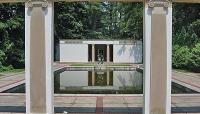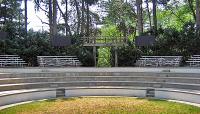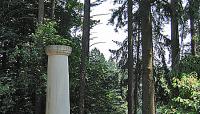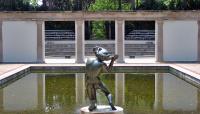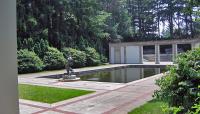Landscape Information
As early as 1914, George Booth envisioned holding performances in a purpose-built theater at Cranbrook, his country estate. Booth sketched plans for an outdoor amphitheater and asked architect Marcus Burrowes to finalize the design. The neoclassical “Greek Theatre” was built southwest of the manor and dedicated in 1915. A semi-circular amphitheater with fixed, stone risers terminates in a swath of lawn that acts as an orchestra pit. The elevated proscenium stage is framed by an open backdrop comprised of pilasters and flanked by enclosed wings. Behind the backdrop is a concrete- and brick-paved court which holds a rectangular reflecting pool. The amphitheater was lined with an eight-foot arborvitae hedge and the entire area was thickly planted with conifers, as recommended by O. C. Simonds. Simonds also lined the walk from the street entrance to the theater with hawthorns.
Architect Albert Kahn added the Mediterranean-style Pavilion as an open-air shelter in 1924, which was later enclosed and readapted by Eliel Saarinen. Since 1932, Cranbrook has leased the Pavilion to St. Dunstan’s Theatre Guild, which was founded by Booth’s son, Henry Scripps Booth, for use as a 206-seat playhouse. It was designated a National Historic Landmark in 1989, as part of the Cranbrook Educational Community grounds.




